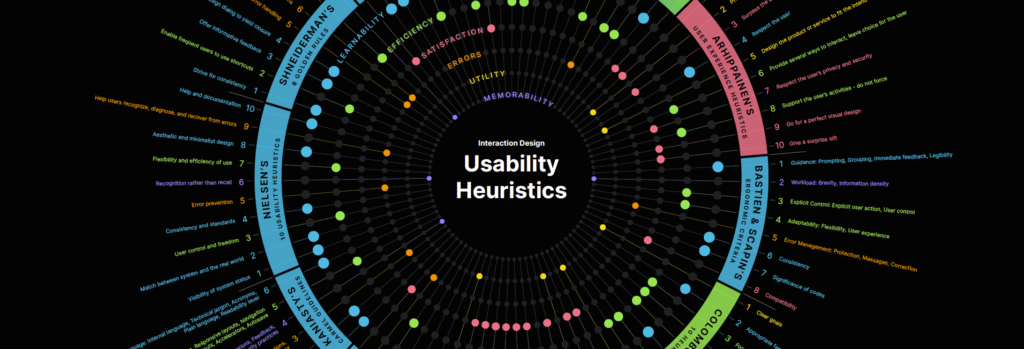
For many UX designers, Jakob Nielsen’s “10 Usability Heuristics for User Interface Design” is the go-to evaluation approach. However, sometimes you might discover discussion-worthy user experience problems that don’t fit the mold.
Michael Kritsch was in the same situation and started searching for alternative usability heuristics frameworks. This led him to the question: How to choose the appropriate method? To help you make an informed decision, Michael explored, categorized, and standardized ten heuristics. He summarized his findings in a comprehensive article.
https://uxdesign.cc/usability-heuristic-frameworks-which-one-is-right-for-you-1962387b7cc
 The popular wireframing tool has just been updated to v6!
The popular wireframing tool has just been updated to v6! With more and more consumers spending time on the web looking for online bargains (let’s be honest, if I see a game for £27.99 online but £34.99 in shops then I wouldn’t be thinking twice either) instead of shops, companies must ask themselves if their website is not only showing the right prices, but is also usable enough to order items from.
With more and more consumers spending time on the web looking for online bargains (let’s be honest, if I see a game for £27.99 online but £34.99 in shops then I wouldn’t be thinking twice either) instead of shops, companies must ask themselves if their website is not only showing the right prices, but is also usable enough to order items from. Working in a busy office is one of the best parts of being a designer or information architect – you can bounce off ideas, discuss projects with others and get their input, and you can generally have a good laugh.
Working in a busy office is one of the best parts of being a designer or information architect – you can bounce off ideas, discuss projects with others and get their input, and you can generally have a good laugh. My day to day work consists of a lot of time spending on the internet, looking at web presences of current clients, prospective clients and their (and our) competition. My tool of the trade being FireFox 3 (especially considering that
My day to day work consists of a lot of time spending on the internet, looking at web presences of current clients, prospective clients and their (and our) competition. My tool of the trade being FireFox 3 (especially considering that  It has been a couple of weeks since I last wrote about Information Architecture, be it
It has been a couple of weeks since I last wrote about Information Architecture, be it  Not so long ago I was asked by a client, if it was possible to change a couple of sections within their site as they just updated their product structure: the client was expanding their products to list two more categories. To make them stand out, their marketing team was thinking of using different colours throughout the main content area so that is looks much more consistent, which included changing all link colours and buttons to these new colours.
Not so long ago I was asked by a client, if it was possible to change a couple of sections within their site as they just updated their product structure: the client was expanding their products to list two more categories. To make them stand out, their marketing team was thinking of using different colours throughout the main content area so that is looks much more consistent, which included changing all link colours and buttons to these new colours. Following my
Following my